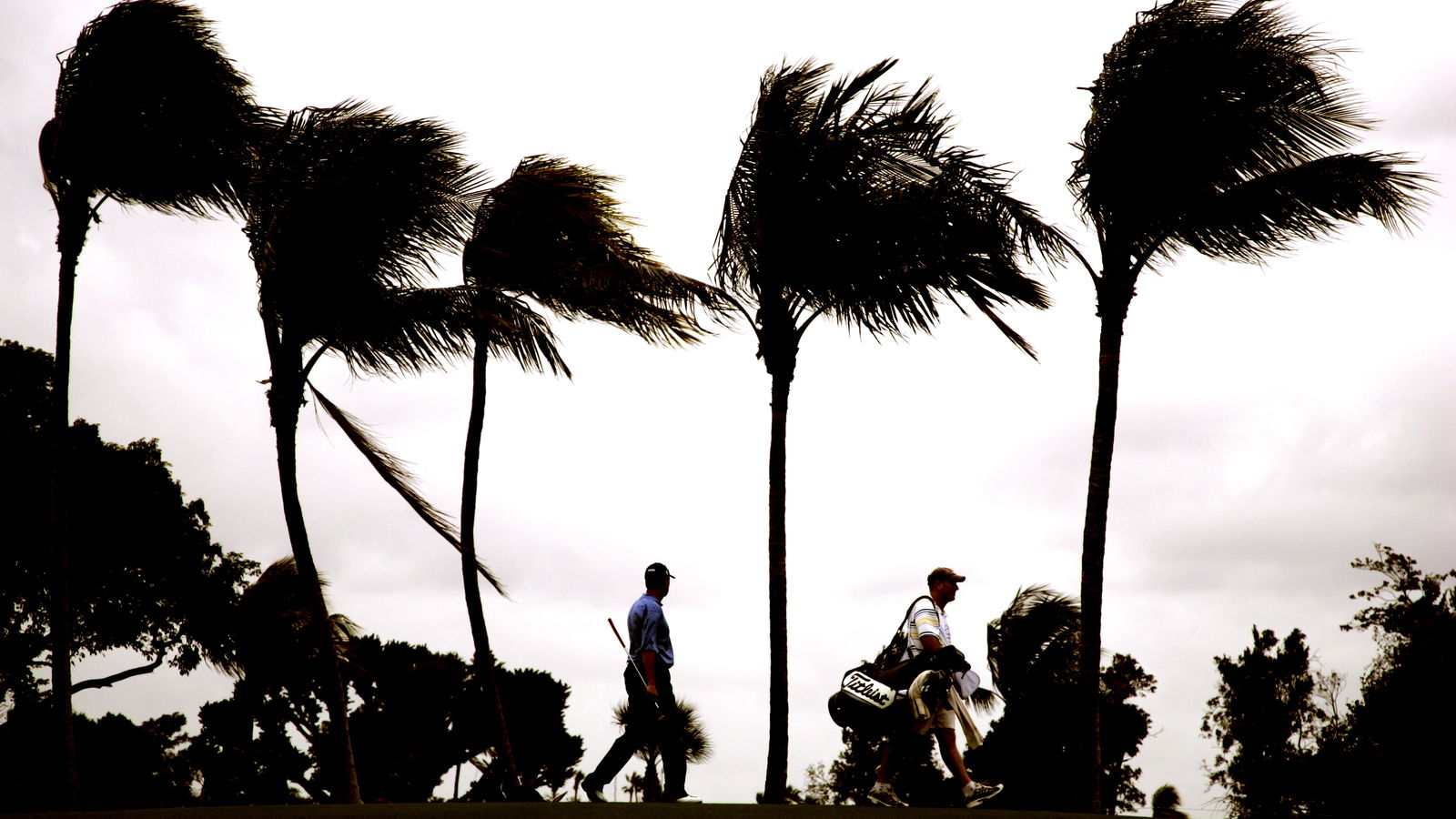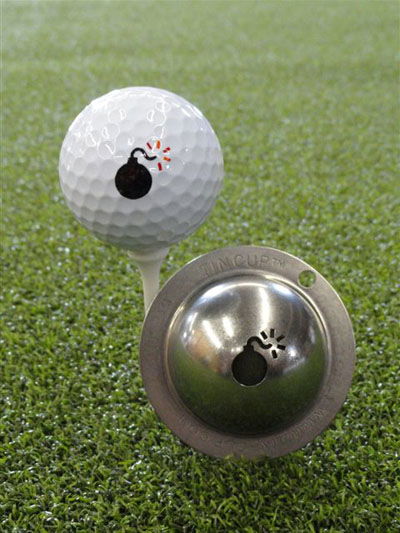Ten of the Best: Golf in the wind tips
How much does a golf ball affect the flight of the ball?

Wind is an amateur golfer's nightmare but it can be managed
Modern golf balls are made to be less affected by the wind than their traditional 'ancestors' but they are still liable to require adjustment in loft, the position of the hands on the grip or the ball in the stance.
One of the greatest wind players Johnnie Miller once said his secret for driving into the wind was to use spin to cut throught the air.
"Strike down on the ball and impart spin which can really effect the ball through the air. My best tip is to tee it high and hit it solid, " said the multi-major champion.
While Greg Norman had his own saying "in the breeze swing with ease," which amounts to similar advice.
Top five tips for playing wind
1. Playing a shot into the wind, demands taking 'more club' (one with less loft), while playing with the wind, requires you must hit less club (more loft).
2. The trick is to de-loft the club - ball back in the stance hands a little forward - to keep the ball low and reduce the wind's effects.
3. It's a good idea to keep an eye on the tree tops while you are playing this kind of golf hole to give you a better idea of conditions as your ball loses its momentum at the top of its trajectory.
4. If you want the ball to land softly, try to curve or fade the ball into a right to left crosswind. If you want more distance, ride the wind by curving it in the same direction as the crosswind.
5. Most important in any windy situation is to grip down a touch for better control and hit the ball solidly. A well-struck ball will be much less affected than a miss-hit shot with side spin.
Top five facts you need to know about wind
1. While golfers are usually able to make a rough measurement of the speed of the wind at ground level - usually sprinkling blades of grass at eye level - they don't always realise that the speed of the wind varies with height above the ground.
2. For a 250 yard drive, for example, a 10 mph the tail wind will usually increase distance (as opposed to a still day) by about nine yards but a 10 mph headwind will hurt by 13 yards with a normal trajectory.
3. Wind turbulence at 50 to 100 feet can also be a factor, and difficult to quantify when playing a spinning short iron. There might be a head wind when you launch the ball, but when the ball reaches its peak three to five seconds later, it may experience a tailwind.
4. Playing a crosswind is the most condition a golfer faces - it will magnify any spin on the ball and greatly reduce distance - especially if you're one of the 85 per-cent of golfers who slice the ball.
5. Professional golfers get higher scores when wind speeds are higher so when you're out on the course remember that it's almost inevitable you wont be hitting a great score.
Want anymore ways to cancel out the wind? Check out Tiger's guide to the sting shot off the tee
MODERN golf balls are made to be less affected by the wind than their traditional 'ancestors' but they are still liable to give you grief. Changing the loft of your club, the positioning of your hands on the grip and where the ball is in your stance are all important elements of playing in the wind.??
Most people have their own way to tackle the elements, including the Tour pros. One of the greatest wind players Johnnie Miller once said his secret for driving into the wind was to "Strike down on the ball and impart spin which can really effect the ball through the air. My best tip is to tee it high and hit it solid."
Until you know what to do and at what time it's always going to be a tricky task playing in the the wind, so check out our top five tips and top five facts you need to know to make it that little bit easier.
Top tips for playing golf in the wind
1. Playing a shot into the wind, demands taking 'more club' (one with less loft), while playing with the wind, requires you must hit less club (more loft).
Off the tee you can either opt for Tiger's low stinger shot, if you're feeling confident, or just hit a nice firm driver, which will create top spin on the ball and cut through the wind.
2. The trick is to de-loft the club - ball back in the stance hands a little forward - to keep the ball low and reduce the wind's effects.
Craig Hanson shows us in his tutorial video that using this technique is essential for controlling your ball flight while playing in the wind.
3. It's a good idea to keep an eye on the tree tops while you are playing this kind of golf hole to give you a better idea of conditions as your ball loses its momentum at the top of its trajectory.
4. If you want the ball to land softly, try to curve or fade the ball into a right to left crosswind. If you want more distance, ride the wind by curving it in the same direction as the crosswind.
5. Most important in any windy situation is to grip down a touch for better control and hit the ball solidly. A well-struck ball will be much less affected than a miss-hit shot with side spin.
Greg Norman had his own saying "in the breeze swing with ease." The legendary Australian knows what he's talking about so give it a go in practice, focusing on connecting with the ball rather than power.
Top facts you need to know about playing golf in the wind
6. While golfers are usually able to make a rough measurement of the speed of the wind at ground level - usually sprinkling blades of grass at eye level - they don't always realise that the speed of the wind varies with height above the ground.
7. For a 250 yard drive, for example, a 10 mph the tail wind will usually increase distance (as opposed to a still day) by about nine yards but a 10 mph headwind will hurt by 13 yards with a normal trajectory.
Even if you're facing a 10mph headwind you can still drive it 250 yards if you know how, so check out our golf's toughest shots instructional guide to driving into the wind for more help.
8. Wind turbulence at 50 to 100 feet can also be a factor, and difficult to quantify when playing a spinning short iron. There might be a head wind when you launch the ball, but when the ball reaches its peak three to five seconds later, it may experience a tailwind.
9. Playing a crosswind is the most condition a golfer faces - it will magnify any spin on the ball and greatly reduce distance - especially if you're one of the 85 per-cent of golfers who slice the ball.
10. Professional golfers get higher scores when wind speeds are higher so when you're out on the course remember that it's almost inevitable you wont be hitting a great score.
First published May 2007. Updated September 2013.
Want anymore tips on playing golf in the wind? Check out our guides to...
Ball position in the wind
Punching into the wind
How to play in the wind top five tips


